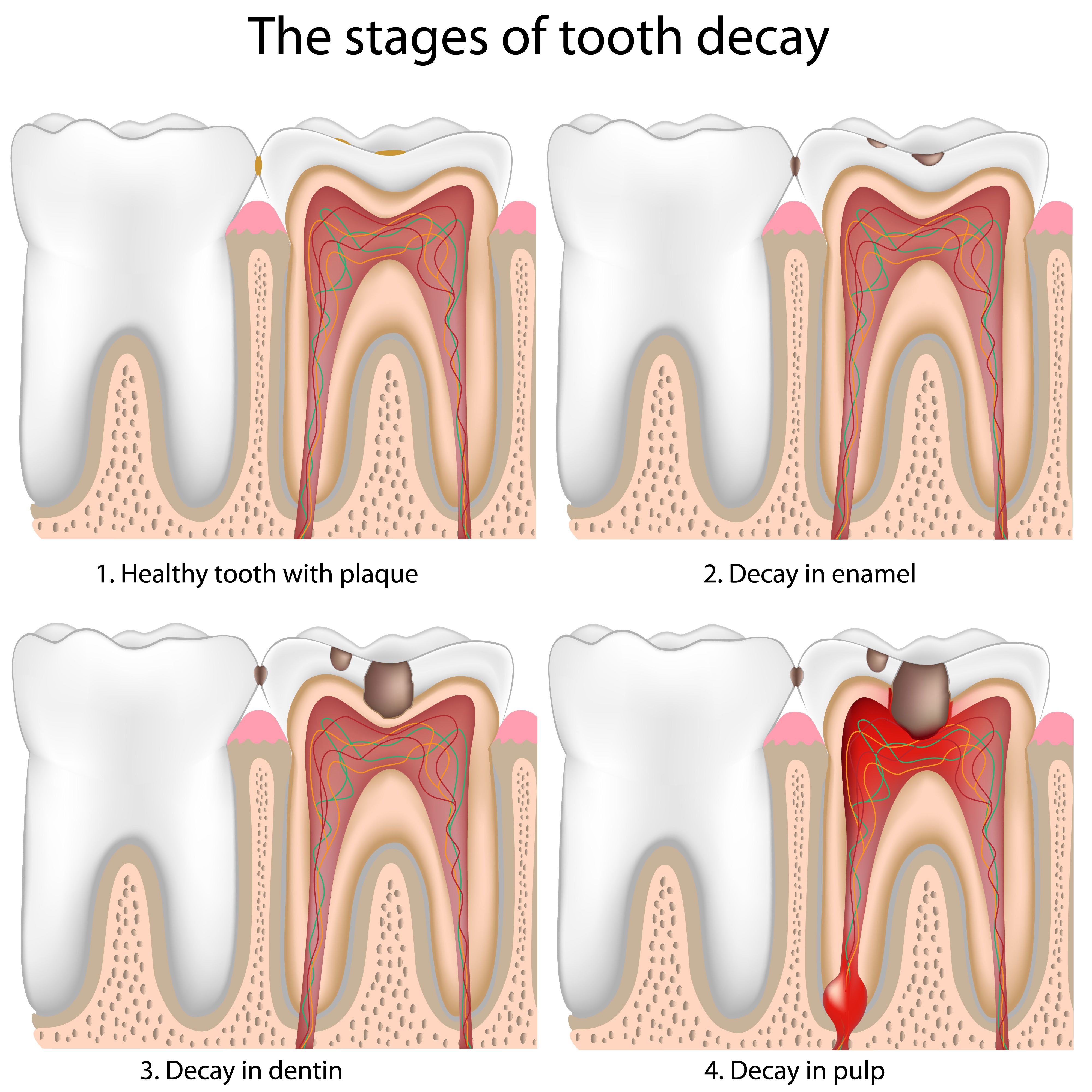The Stages of Tooth Decay
 At the Cosmetic Dentistry Institute, we do much more than simply create beautiful, healthy smiles through our restorative dentistry, cosmetic dentistry, and general dentistry procedures. We also provide our patients with the education they need to take proper care of their teeth and gums in between visits to our practice. We encourage our patients to take an active role in their own dental care, as doing so will ultimately help them to maintain excellent oral health for a lifetime.
At the Cosmetic Dentistry Institute, we do much more than simply create beautiful, healthy smiles through our restorative dentistry, cosmetic dentistry, and general dentistry procedures. We also provide our patients with the education they need to take proper care of their teeth and gums in between visits to our practice. We encourage our patients to take an active role in their own dental care, as doing so will ultimately help them to maintain excellent oral health for a lifetime.
An essential component of our patient education is information on how to recognize dental problems in their earliest stages so that treatment can be sought before a problem has the opportunity to worsen. Among the most common of these dental problems is tooth decay. In discussing the stages of tooth decay at their Troy, MI dental practice, Dr. Craig Goldin, Dr. Marcy Goldin, and Dr. David Whalen emphasize to patients how important it is that they seek treatment at the first signs of potential decay, when it is easiest to treat. If they wait until tooth decay spreads, it may be too late to salvage the tooth.
If you are interested in learning more about how we can help you maintain excellent oral health for a lifetime, please schedule your initial consultation with one of our esteemed dentists at the Cosmetic Dentistry Institute today.
The Five Stages of Tooth Decay
While it is important to be aware of the five stages of tooth decay, it is even more important to visit our practice at least twice a year for professional cleanings and thorough oral exams, as recommended by the American Dental Association. Doing so is the surest way to catch tooth disease in its earliest stages, as the condition often produces few obvious symptoms at this point.
The five stages of tooth decay include:
- Demineralization: During this initial stage, a small portion of the surface of the tooth will become demineralized, which will often be noticeable only as a white or brown spot on the enamel. If tooth decay is diagnosed at this stage, it may be possible to remineralize the enamel and reverse any damage done.
- Enamel erosion: If treatment is not immediately sought, bacteria will continue to eat away at the enamel of the teeth, causing it to erode and exposing the dentin layer underneath. This layer contains thousands of microscopic tubules leading to the nerves of the tooth, resulting in tooth sensitivity. Treatment can still be effective at this stage, usually in the form of a tooth-colored filling, inlay, onlay, or crown.
- Dentin erosion: The dentin is not as strong or as resistant to decay as the enamel that protected it. Once bacteria reach the dentin, the pace of decay will quicken. At this point, treatment with a filling, inlay, onlay, or crown may still be possible, but time is of the essence.
- Dental pulp infection: Eventually the decay will reach the root canals at the center of the tooth. Each root canal contains a nerve-rich substance called dental pulp, which is essential to the health of the tooth. When this pulp becomes infected or inflamed, it must be surgically removed in order to save the tooth. The root canal must then be disinfected, and the tooth must be sealed and protected from further damage through the placement of a dental crown.
- Abscess formation: The final stage of tooth decay, abscess formation, occurs if root canal therapy is not performed in a timely manner, giving the infection an opportunity to spread to the tip of the tooth root. From there, it can easily move to the jawbone, the gums, and even adjacent teeth while an abscess will form at the base of tooth. At this point, there is still a chance that the tooth can be salvaged through root canal therapy. However, tooth extraction presents itself for the first time as a genuine possibility. If left untreated, the tooth will eventually die.
Learn More about the Stages of Tooth Decay
To learn more about the stages of tooth decay, please contact the Cosmetic Dentistry Institute today.



